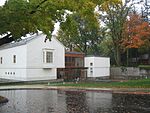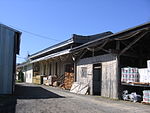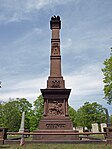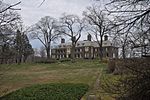Phineas Chapman Lounsbury House

Lounsbury House, formerly known as Grovelawn and as the Ridgefield Veterans Memorial Community Center, is a historic house at 316 Main Street in Ridgefield, Connecticut. It is a two-story wood frame Classical Revival-style building that was built in 1895. Its design, by Charles Northrop, was an emulation of the Connecticut State Building exhibited at the 1893 Columbian Exposition, at the request of Governor Phineas C. Lounsbury, who attended the exhibition. It served as his family home. Lounsbury died in 1925, and his heirs gave the house to the town in 1945. The House and classic gardens now serve as a venue for weddings, corporate meetings, art gatherings, festivals and special events. The building was listed on the National Register of Historic Places in 1975.
Excerpt from the Wikipedia article Phineas Chapman Lounsbury House (License: CC BY-SA 3.0, Authors, Images).Phineas Chapman Lounsbury House
Main Street,
Geographical coordinates (GPS) Address External links Nearby Places Show on map
Geographical coordinates (GPS)
| Latitude | Longitude |
|---|---|
| N 41.279444444444 ° | E -73.497777777778 ° |
Address
Ridgefield Community Center
Main Street 316
06877
Connecticut, United States
Open on Google Maps









